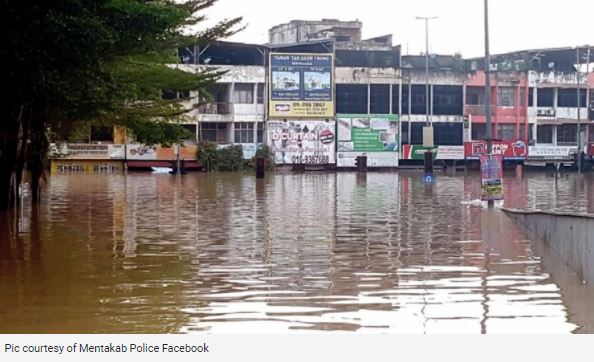Will this be the beginning of the end of our annual misery?
Emeritus Professor Tan Sri Dato' Dzulkifli Abdul Razak
Opinion - New Straits Times
December 23, 2021
IN July, one daily newspaper in Europe screamed "Hell on Earth" to describe the deadliest floods in Germany in decades.
More than 106 people were reported killed in a flood-triggered landslide. Up to 1,300 were said to be missing in one of the worst floods in the country's history.
Some termed it as "freak rain storms," others "flood of death". They all reflected the fear that things were unpredictable and could get worse.
Meteorologists were then forecasting "extreme storms" in some parts of Germany with peak rainfall reaching possibly 200 litres per square metre.
A dam close to the border was at bursting point, while another on the brink of collapse. Some communities were laid bare due to swollen rivers sweeping through towns and villages. Trees were uprooted, vehicles washed away, residences were knocked down and connectivity lost.
The then chancellor dubbed the dire weather "a catastrophe" when she told a press conference: "Heavy rainfall and floods are very inadequate words to describe this. It is therefore really a catastrophe.
"I fear that we will only see the full extent of the disaster in the coming days." And she is right.
At the same time, unprecedented weather created a perilous situation elsewhere in Western Europe, with thousands forced to evacuate as homes collapsed and cars were swept away by floodwaters.
At least 15 people were reported dead in neighbouring Belgium, and thousands of homes evacuated in the Netherlands, Luxembourg and Switzerland as raging rivers burst their banks.
By October, flood alerts were reported in the United States, indicating the highest risk in New York state's southern tier.
A study said climate change was the greatest flooding threat in these places in the US.
The highest community flood risk was in the coastal areas, and four states — Louisiana, Florida, Kentucky and West Virginia — were particularly vulnerable.
On the other side of the globe, near New South Wales, Australians in low-lying areas were facing a similar experience.
They were ordered to evacuate before a major flood travelling down the Lachlan River reached them. Around 800 homes were involved.
Sydney was also hit by heavy rain and battered by hailstones.
Suburbs and fields were flooded, trees along roads were brought down and powerlines damaged in multiple locations as the storm swept across the city.
All these examples demonstrate that when it comes to ecological and climatic disasters, location and socio-economic status make no difference.
The loss of lives and property, as well as the environmental damage are comparable to the more vulnerable facing greater challenges.
Last week was our turn to experience a catastrophic weather event. Tens of thousands of people were reported to be displaced after torrential rains caused floods countrywide.
Perak was the latest state to be hit by floods on Sunday, while the situation worsened in six other states, causing tens of thousands of people to be evacuated to relief centres.
Many people were locked down nationwide, not only in homes but also in vehicles and strange places too.
The heavy rain that started on Friday morning was said to be equivalent to a month's rainfall in normal conditions, a new normal.
At the time of writing, the situation has yet to improve.
Malaysia should have been better prepared since floods, freak or otherwise, have been the national norm for years. No doubt that this time, it is among the worst as the pandemic is still with us.
Should not this be the beginning of the end of our annual misery?
The writer, an NST columnist for more than 20 years, is International Islamic University Malaysia rector

